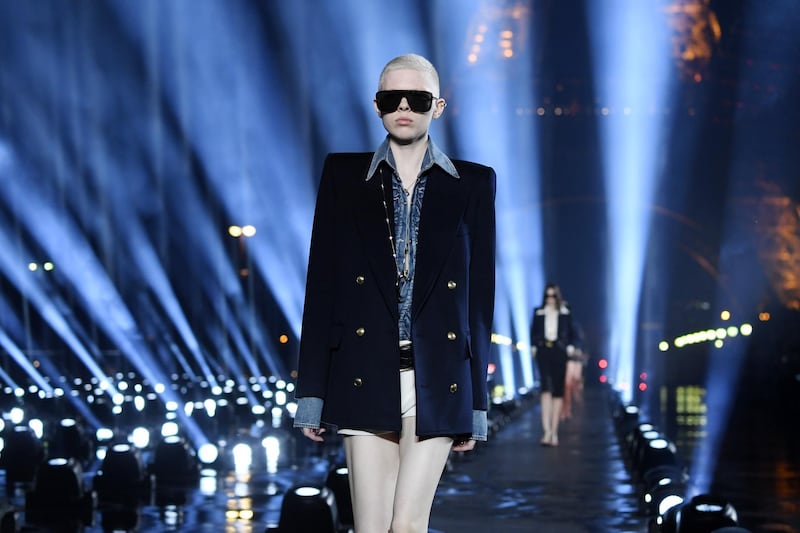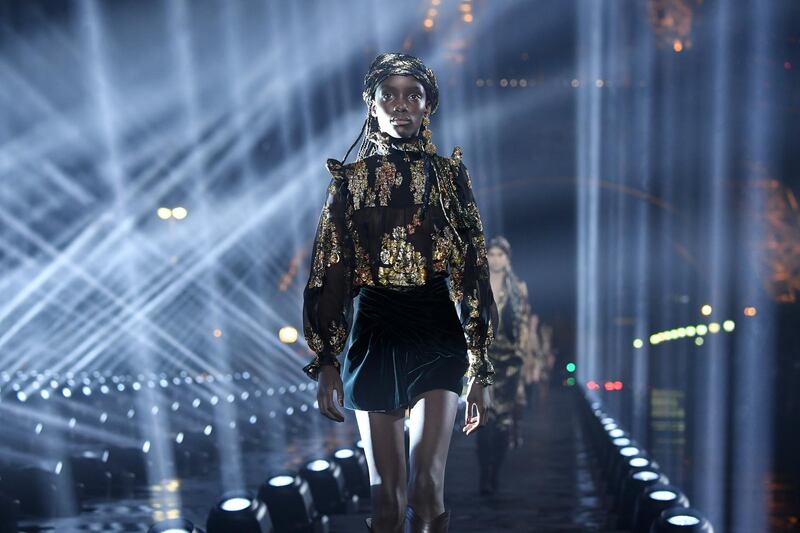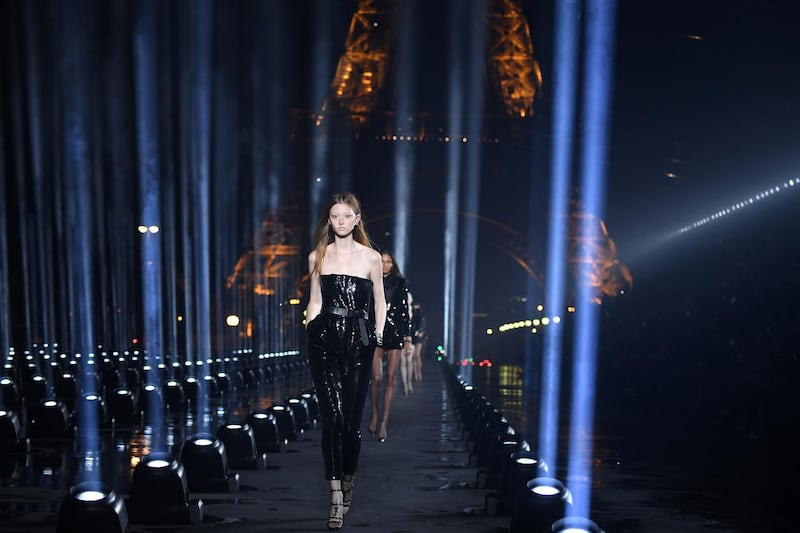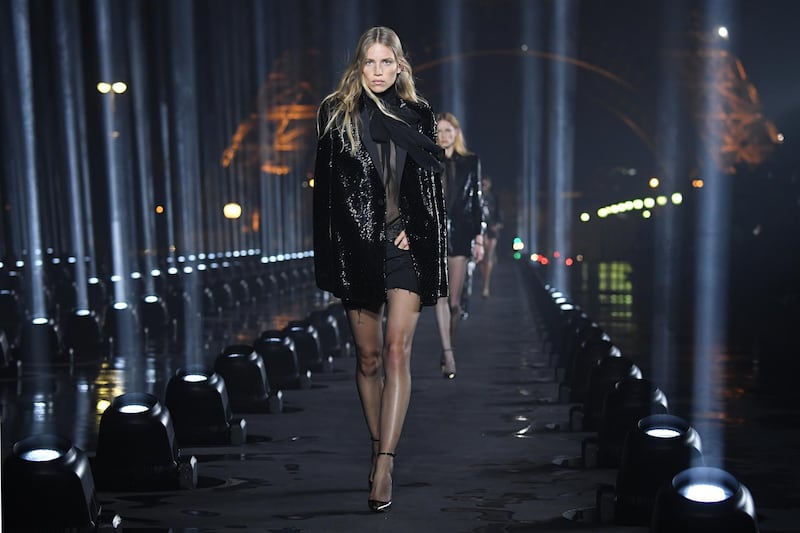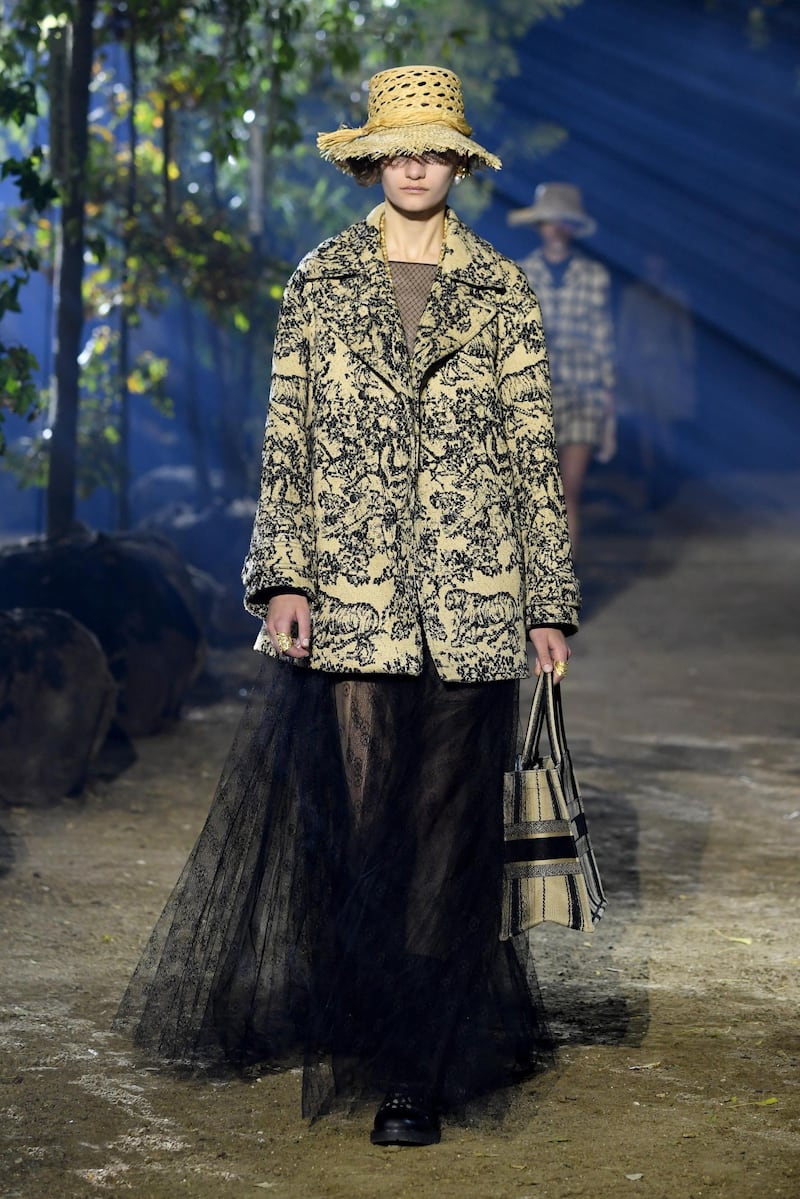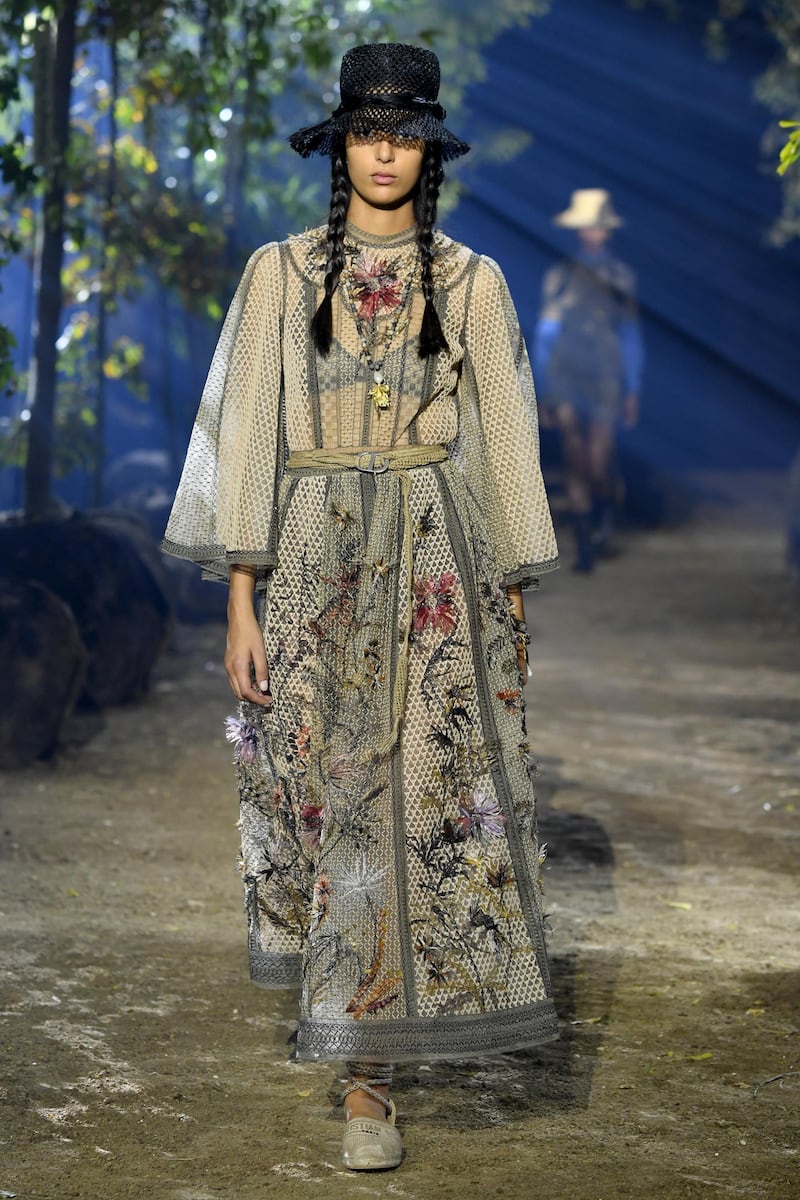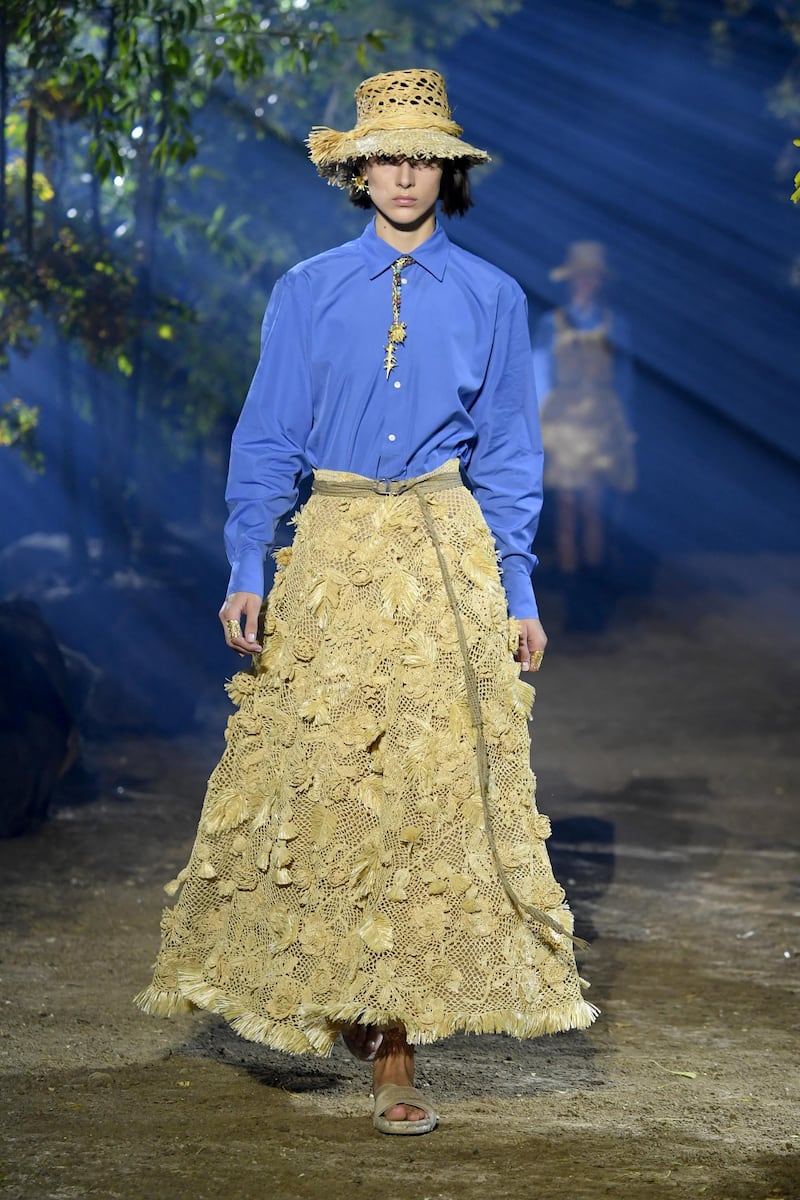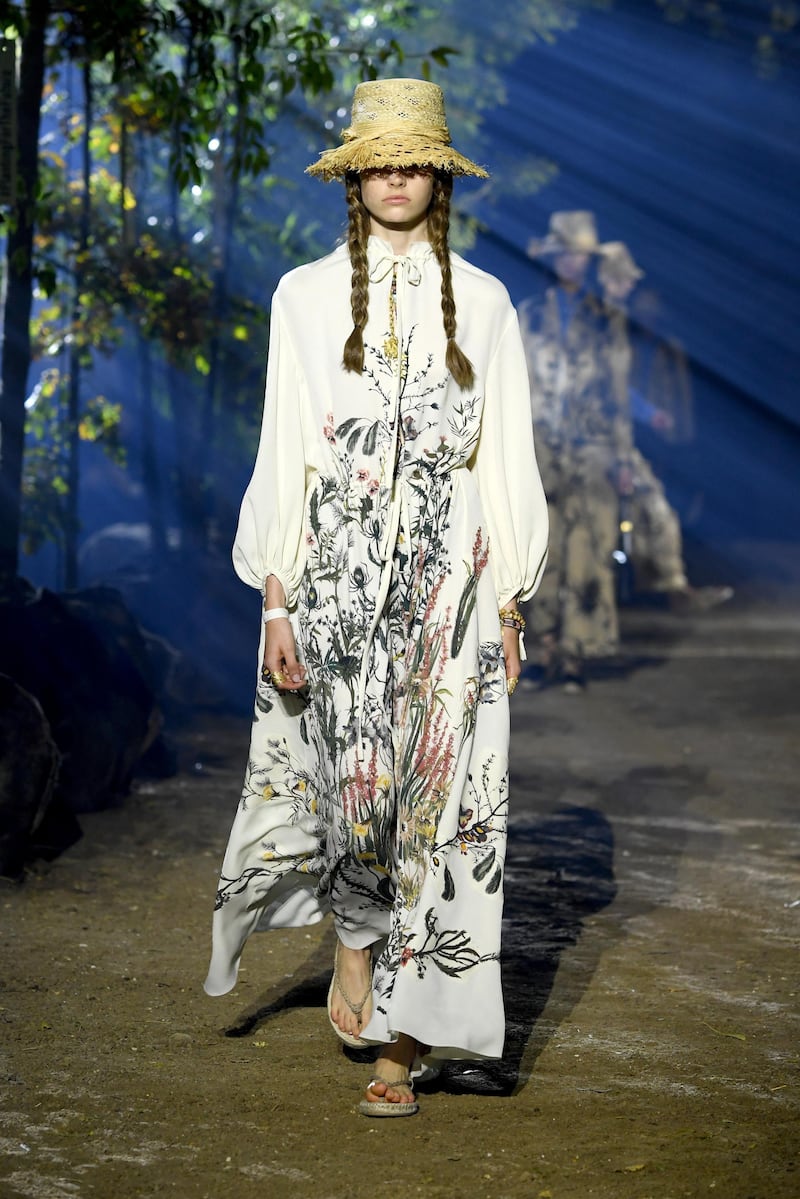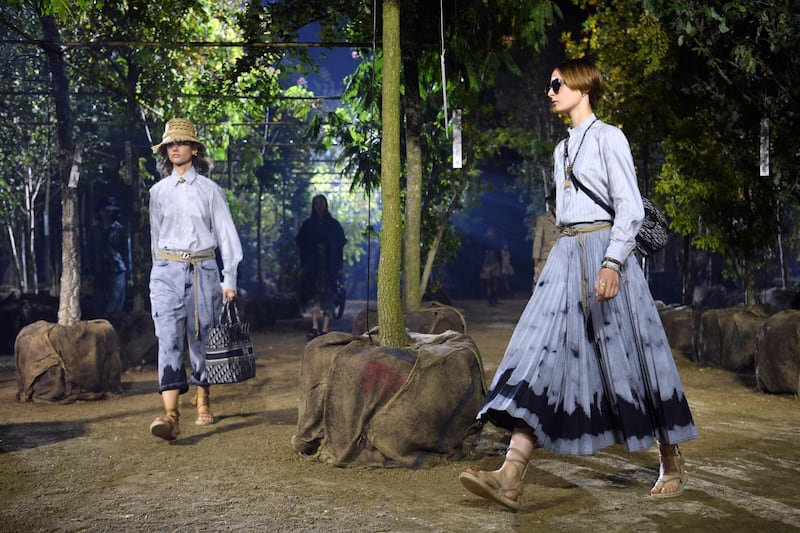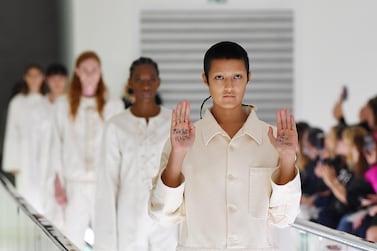Paris Fashion Week has begun with two of the industry's biggest names showing within just hours of each other, each delivering shows with polar opposite philosophies.
Over at Christian Dior, creative director Maria Grazia Chiuri nodded to nature by building a forest of living trees, their roots carefully wrapped in protective burlap sacks. The forest was created in collaboration with the botanical collective Coloco, who sourced 164 trees from around Europe, to highlight the importance of bio-diversity.
Unlike Chanel, that drew heavy criticism for felling one hundred year old trees for its autumn / winter 2018 show, Chiuri was quick to point out that, post show, the Dior trees were joining sustainability programmes across France in Longchamp, Montreuil, and Brétigny-Sur-Orge.
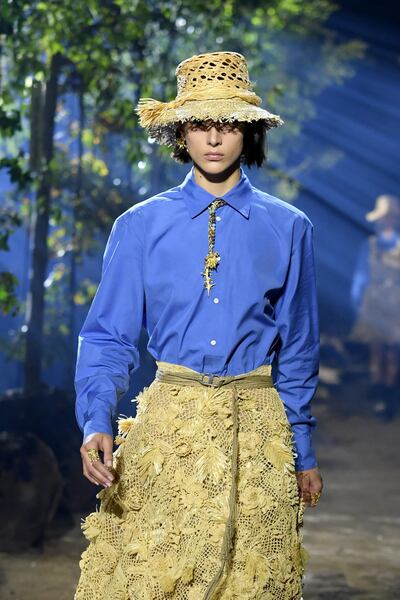
Through this forest Chiuri's models wandered in looks that were part feminist, part wood fairy, and coming just one day after climate crisis activist Greta Thunberg savaged world leaders for failing to act, models sported Thunberg-style plaited hair.
With feminism as her DNA, Chiuri took inspiration from Christian Dior's own sister, Catherine. Far from being overshadowed by her famous brother, Catherine was a fearless woman, who fought for the French resistance before being captured, tortured and sent to Ravensbrück concentration camp.
After her release she turned to flowers, and became the first flower wholesaler in Paris, growing her own blooms in southern France. This was translated as blue utilitarian shirts, paired with Chiuri's signature floor length skirts, now in hessian and strewn with embroidered wildflowers. Most looks came with woven farmer's hats, while the best selling Book bag was repurposed into a trug, filled with gardening tools.
Over at Saint Laurent it was a very different mood. A glossy black runway was lined with searchlights that arched the Parisian night sky, visible for miles. The stark white bulbs created light pollution even at ground level, through which creative director Anthony Vaccarello had his models march.
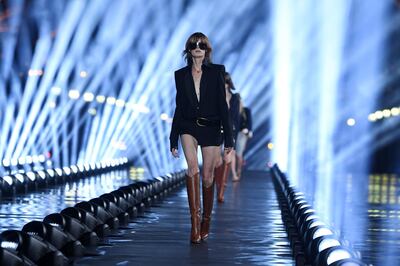
Clad in the micro minis and sheer tops started by his predecessor Hedi Slimane, Vaccarello's models wore additional spray on leather, carved tightly around torsos and legs, and matched with high heels. Almost entirely monochromatic - lightened occasionally with smudges of patinated gold - the cuts were razor sharp, like the blazer/mini dress with squared off shoulders, and looks spoke as eloquently of the clothes as of the skin left exposed.
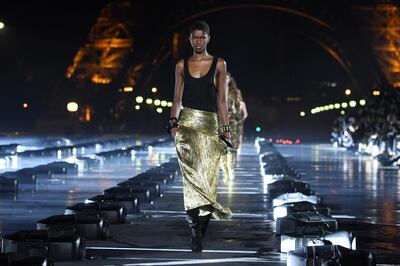
Aimed squarely at the beautiful young things of this world, hands were jammed in pockets and sunglasses came standard issue, as the breathless swagger of each look spoke volumes of the beautiful arrogance of life in the major capitals of the world. Infused with a live-like-there-is-no-tomorrow nonchalance, though undeniably striking, it raised a bigger issue.
Coming so soon after the oxygen soaked Dior, the sharp power of Vaccarello posed an uneasy question that concerns us all: in which of these two very different directions does the future of fashion lie?
